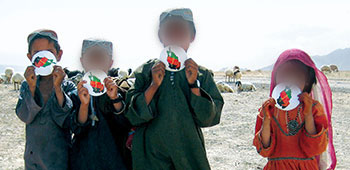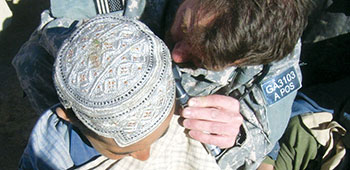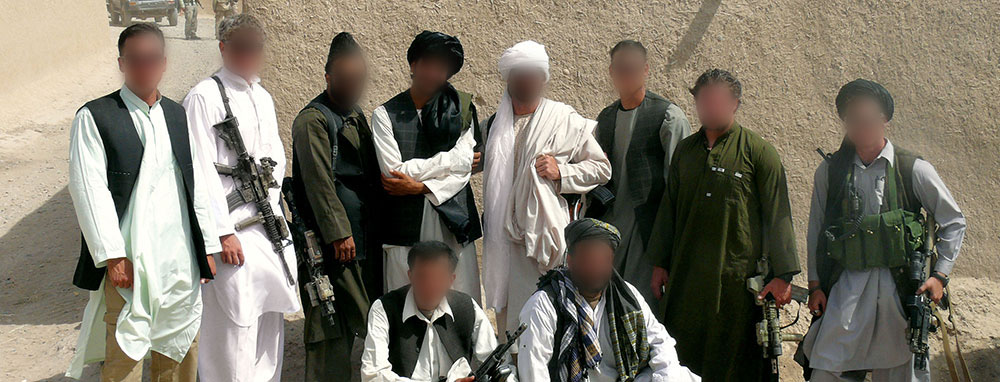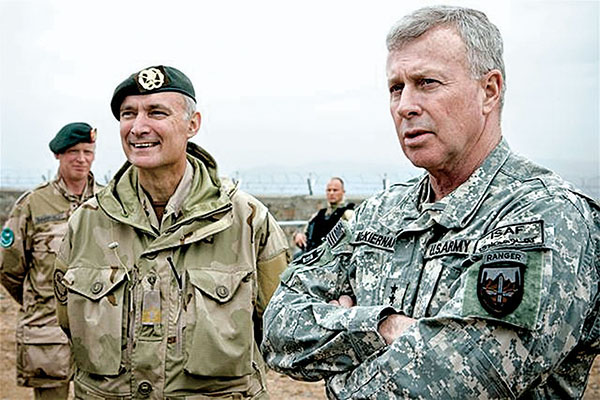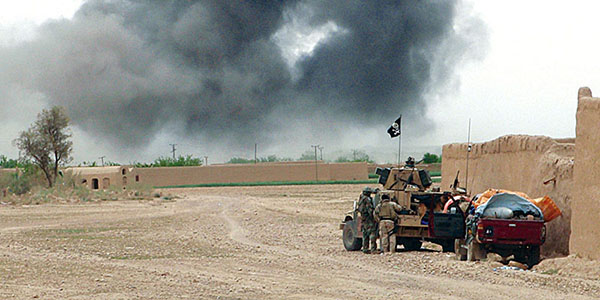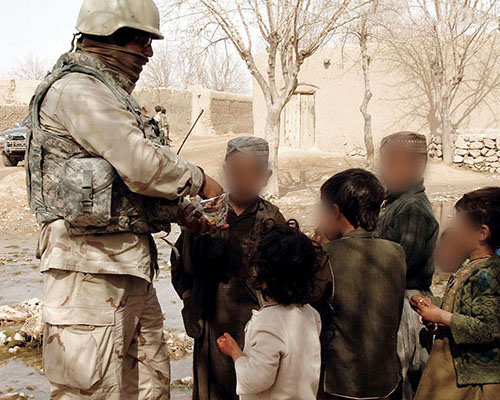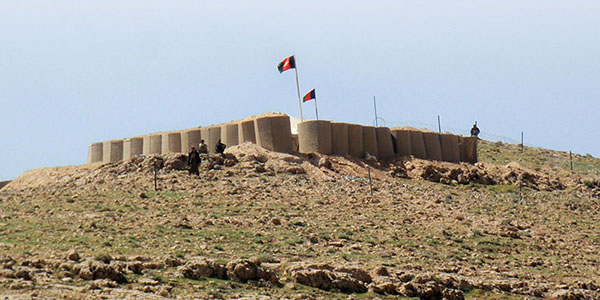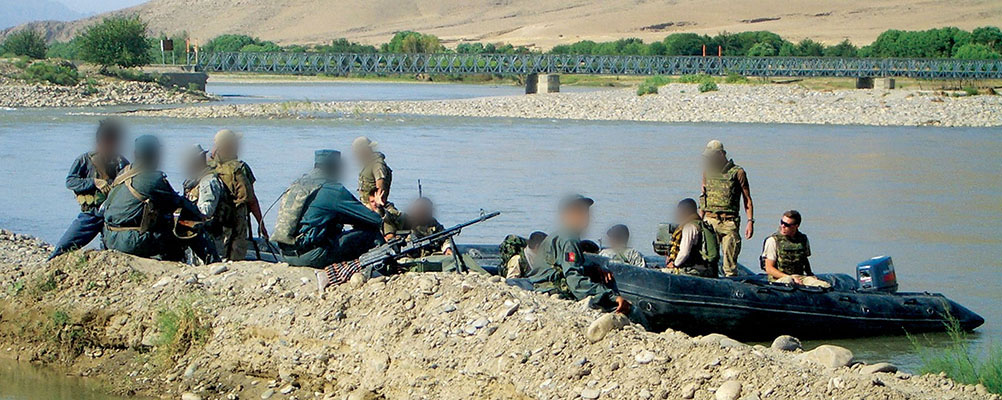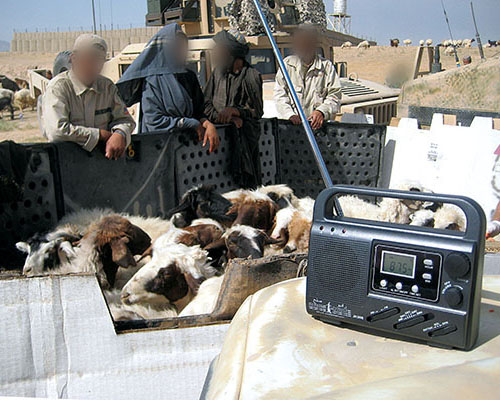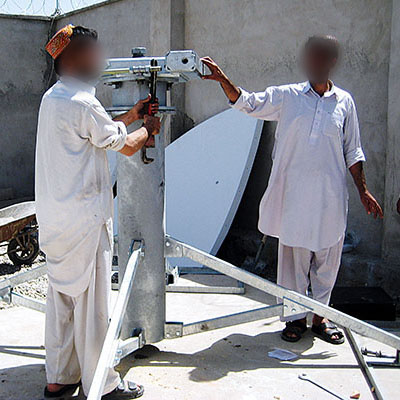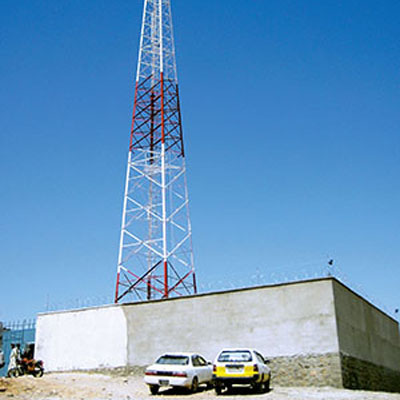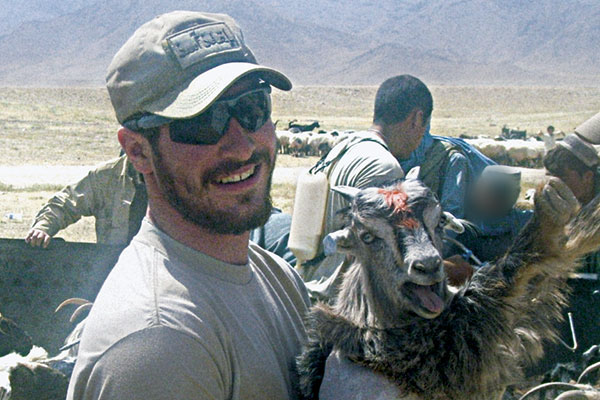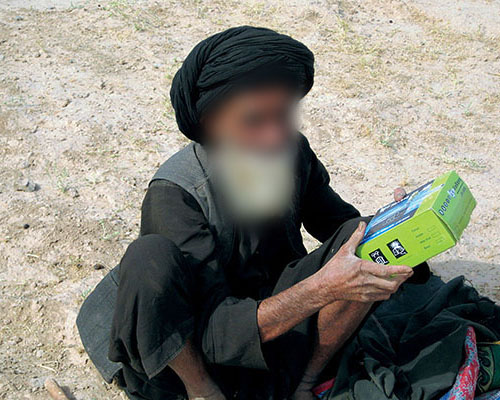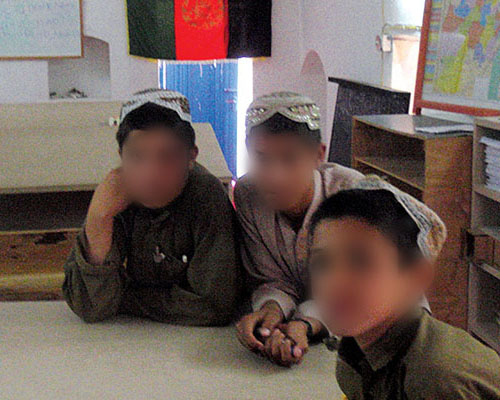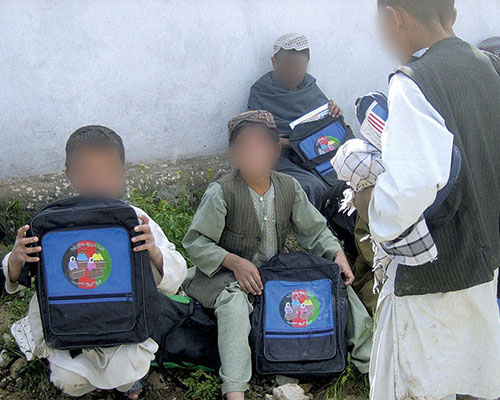“What planet are you on?” The Special Forces sergeant’s question elicited a mixed reaction from the dozen Afghan boys seated on benches in the small, newly painted classroom. Some stared blankly at the soldier. Others talked excitedly among themselves. “Deh Rawod,” one boy said, identifying his hometown. “Not quite,” said the sergeant, “but we’ll figure it out.” School was in session at Fire Base Tycz.
“The CA guys had been paying the radio station disc jockey to teach the kids that hung around the firebase,” said SSG Peter McKenzie. “One cold rainy day we came in and here are the kids huddled around a whiteboard in the carport. I figured we could do better than that.” McKenzie initiated a project to establish a school on the firebase. “We got the local carpenters to clean out a public building used for storage, paint it, put down some carpet, and build some desks and benches. We started out with about a dozen boys, aged six to sixteen,” he said. “The CA guys had a warehouse full of school supplies and they helped us out.” Support also arrived from a number of outside sources.
“I come from a big family and I sent them an email about our school,” said SSG David Pruitt. “They started sending shoes and books for the kids.” “I gave them backpacks and school supplies like we were handing out all over,” said SFC Michael Gallant, CAT 122. “When I told my folks back home, my mother-in-law contacted the local Lutheran Church. They sent us an encyclopedia and dictionary set.” Several of the team members got involved in teaching the children.
“We started with Geography and Astronomy, then English and Math, since my first question to them, ‘What planet are you on?’ didn’t get a correct answer,” said Peter McKenzie. “I got some software to do the Geography.” “I taught some math and basic geometry when I could,” said SSG David Pruitt. “We would give them homework. You could tell we were succeeding when the kids asked for more homework to keep from having to do chores at home. If they don’t have an education, what chance do they have,” observed Pruitt. SFC Craig Kramer helped out with math. “The kids were real sharp with numbers. It was good to watch them progress.”
When the team was on the base, classes were held every day except Friday. “I got copies of the movies Star Wars and Shrek,” said SFC John Watson. “We showed them on Fridays. Shrek was a huge favorite.” The school came to represent the type of effort the teams were putting into every facet of their mission.
“Our operational tempo was very high,” said MSG Jason Poster. “We encouraged the guys to do their best to make an impact wherever and whenever they could. The school was a spontaneous effort to develop the kids.” The benefits of the impromptu school were evident before the team redeployed. “One of the kids, he was maybe seventeen, is now one of the loan officers in town,” noted SFC Roger Scarlatti. “He learned to add and subtract, and because he can, he now has a job.”
In 2009 in Deh Rawod, the three elements of ARSOF combined very effectively to significantly reduce the influence of the Taliban in a strategically vital area. With each element complementing the others, the ARSOF teams made major improvements in a district only recently under the sway of the enemy. As MAJ Martin Calhoun, the AOB Commander observed, ”Deh Rawod was a success story. But, it was having the right people in the right place.”



